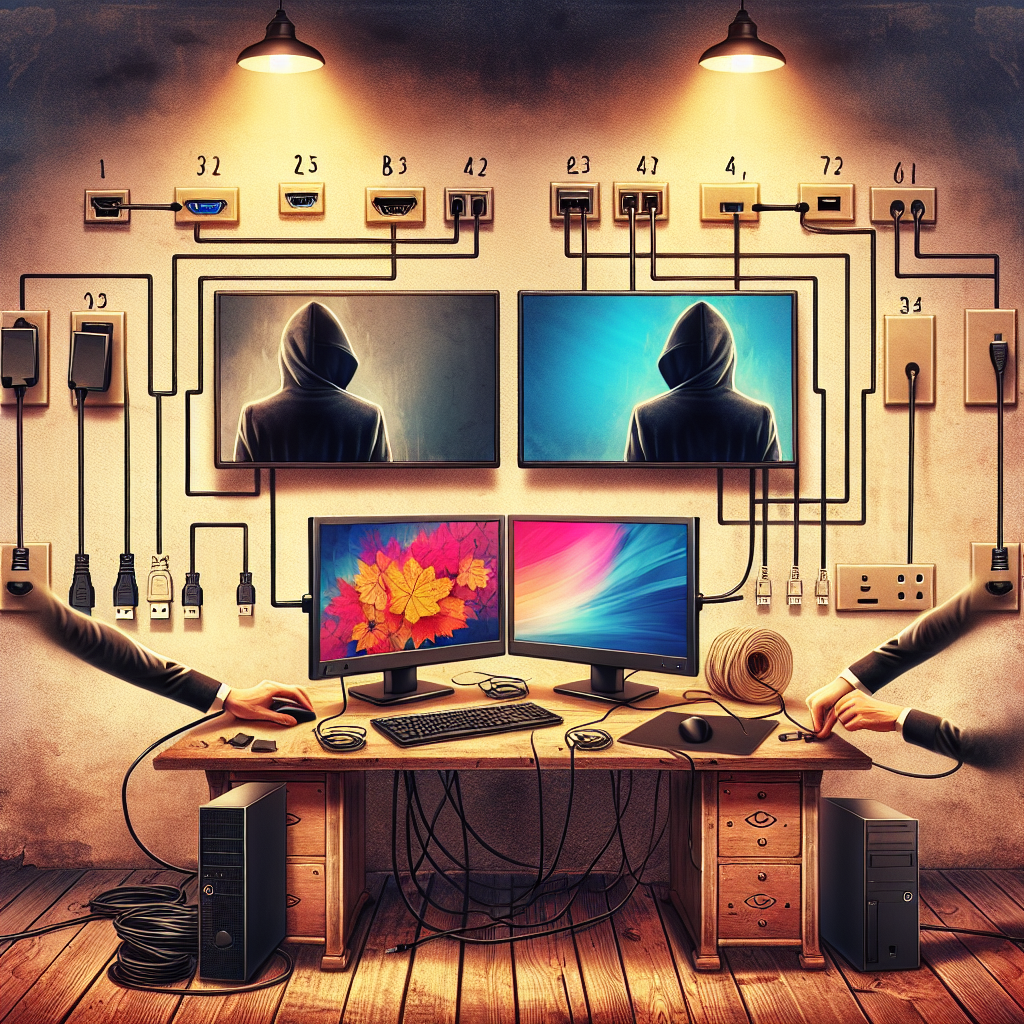Introduction
Connecting two monitors to your computer can significantly enhance your productivity, giving you more screen real estate to work with. Whether you’re a professional who needs multiple displays for work or a gamer seeking an immersive experience, setting up dual monitors is easier than you might think. This guide will walk you through the steps to connect two monitors to your computer.
System Requirements
Before diving into the setup, it’s essential to ensure your system meets the necessary requirements. Below are the minimum requirements for connecting two monitors:
- A Computer with a Supported Graphics Card: Ensure your computer has a graphics card that supports multiple displays.
- Two Monitors: Both monitors should have compatible ports such as HDMI, DisplayPort, or VGA.
- Appropriate Cables: Ensure you have the necessary cables to connect your monitors to your computer.
- Operating System: The steps might vary slightly depending on whether you use Windows, macOS, or Linux.
Step-by-Step Guide on How to Connect Two Monitors
1. Identify the Ports
First, you need to identify the ports available on both your computer and monitors. Common ports include HDMI, DisplayPort, VGA, and DVI. Below is a quick reference table:
| Port Type | Description |
|---|---|
| HDMI | A common interface for video and audio. |
| DisplayPort | High-definition digital video and audio. |
| VGA | Analog video interface, less common in modern monitors. |
| DVI | Older digital video interface. |
Make sure you have the right cables for the ports available on your devices.
2. Connect the Monitors to the Computer
Once you have identified the appropriate ports, follow these steps to physically connect your monitors to your computer:
Windows:
- Turn off your computer.
- Connect the first monitor to the appropriate port (HDMI, DisplayPort, etc.).
- Connect the second monitor to another available port.
- Turn on your computer.
macOS:
- Turn off your Mac.
- Connect the first monitor to the appropriate port.
- Connect the second monitor to another available port.
- Turn on your Mac.
Linux:
- Turn off your computer.
- Connect the first monitor to the appropriate port.
- Connect the second monitor to another available port.
- Turn on your computer.
3. Configure Display Settings
Now that your monitors are connected, the next step is to configure the display settings to optimize your dual-monitor setup.
Windows:
- Right-click on the desktop and select “Display settings.”
- Under the “Multiple displays” section, select “Extend these displays” to use both monitors as a single large workspace.
- Adjust the resolution and orientation of each monitor as needed.
- Click “Apply” and then “OK” to save the changes.
macOS:
- Go to “System Preferences” and select “Displays.”
- Click on the “Arrangement” tab.
- Drag the display icons to match the physical arrangement of your monitors.
- Check or uncheck “Mirror Displays” as needed.
- Adjust the resolution and other settings as needed.
Linux:
- Open the display settings from your desktop environment (the process may vary depending on your desktop environment).
- Select the option to “Extend” the displays.
- Adjust the resolution, orientation, and layout of each screen.
- Save the changes.
4. Tweak Additional Settings
Depending on your use case, you may want to tweak additional settings for optimal performance:
- Taskbar Settings: In Windows, you can configure where the taskbar appears. Right-click on the taskbar, select “Taskbar settings,” and choose whether to show the taskbar on one or both monitors.
- Backgrounds: You can have different wallpapers for each monitor. In Windows, go to “Personalization” and choose “Background.” For macOS, go to “System Preferences” > “Desktop & Screen Saver.”
- Scaling: Adjust the scaling settings if the text or icons appear too small or large. In Windows, this is under “Display settings,” and in macOS, it’s within the “Displays” settings.
Troubleshooting Common Issues
Despite following the steps, you might encounter some issues. Here’s how to solve common problems:
- Monitor Not Detected: Ensure the cables are securely connected. Update your graphics drivers and try restarting your computer.
- Incorrect Resolution: Make sure the resolution settings for each monitor are set correctly in the display settings.
- Monitor Flickering or Blinking: Check the cable quality. Low-quality cables can cause connectivity issues. Additionally, ensure your graphics card drivers are up to date.
Conclusion
Successfully connecting two monitors to your computer can elevate your productivity and provide a more efficient working environment. By following this guide, you should be able to set up, configure, and troubleshoot your dual-monitor setup with ease. Happy multitasking!

